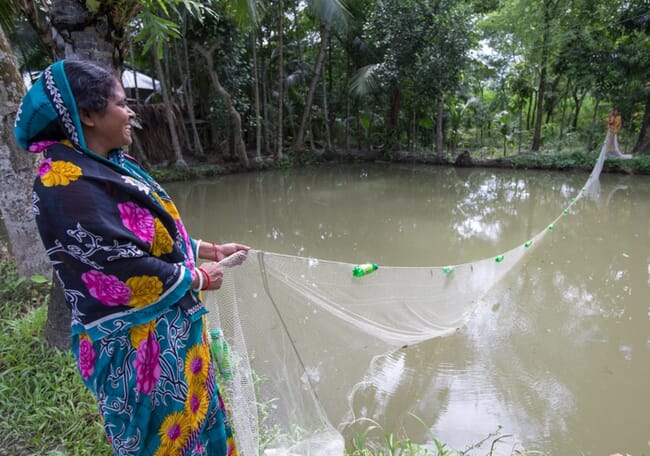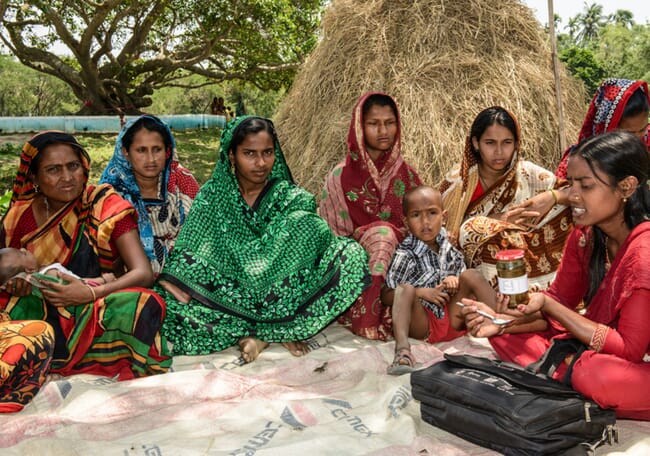In Myanmar, fish is an important food in the diet, with an annual average national intake of 21 kilograms per capita. An increasing demand for fish has boosted aquaculture, which has grown rapidly in the last 20 years. However, there are geographical disparities in fish supply and consumption, with a low consumption of 8.5 kilograms per capita per year in distant, hilly and mountainous regions.

© Yousuf Tushar
Fish is a source of many essential nutrients, including micronutrients, essential fatty acids and animal protein. Small fish, in particular, when eaten whole, provide calcium, iron, zinc, vitamin B12 and vitamin A. In a country where at least one in every three children under five years of age suffers from stunting, and one in every five is underweight, the nutritional contribution of small fish to the diet can support the country in nourishing its children. Children who are chronically malnourished have increased risks of reduced cognitive ability, diseases and low productivity later in life.
The Aquaculture for Income and Nutrition (AIN) project (2011-2016),funded by USAID Feed the Future, was implemented in southwest Bangladesh, with the main goal of increasing income and nutrition through improved fish and shrimp productivity. The success of the project, which is built upon tried and tested approaches, can serve as a model for rolling out similar nutrition-sensitive fish production systems—specifically homestead pond polyculture of carp and small fish species—in Myanmar.
According to an AIN project staff, one key lesson learned is that continuous consultation and open communication with household members were major factors that led to an increase in household consumption of the micronutrient-rich mola fish. He explained that open communication resulted in finding solutions for technical issues, for example modifying the gill net to make it easier for women to operate. He added that small details such as the use of two appropriate mesh sizes and knots were essential for the gill net to serve the purpose of catching small amounts of mola in a short time for household consumption.

© Finn Thilsted
Another nutrition-sensitive approach is the use of local and easily available ingredients to make fish chutney, intended to increase intakes of multiple essential nutrients, including micronutrients, in pregnant and lactating women. Use of ingredients that are familiar and available such as dried puti, a very common and inexpensive small fish, garlic, onion, chili, mustard oil and vinegar ensures acceptability of this nutrient-rich fish product. It also contributes to increasing dietary diversity among women when consumed regularly.
Additionally, strong linkages and cooperation with government institutions serve as core mechanisms in implementing the activities at the community level, during distribution of carp fingerlings and mola brood stock, training and dissemination campaigns. The participation of government institutions could also promote sustainability of the approaches that were introduced through the AIN project.
Myanmar has a strong capacity for growth in the aquaculture sector. Different stakeholders, including research centres such as WorldFish, together with government institutions, international organisations, the private sector and local communities, are collaborating to affect positive change. This can be through overhauling policies, strengthening capacity and increasing investments in research and development. As support for aquaculture increases, interventions must be made nutrition-sensitive, resulting in increased productivity and income for small-scale fishers as well as, most importantly, better nourished children, a key strategic objective of the Government of Myanmar.
This article originally appeared on the WorldFish blog.



